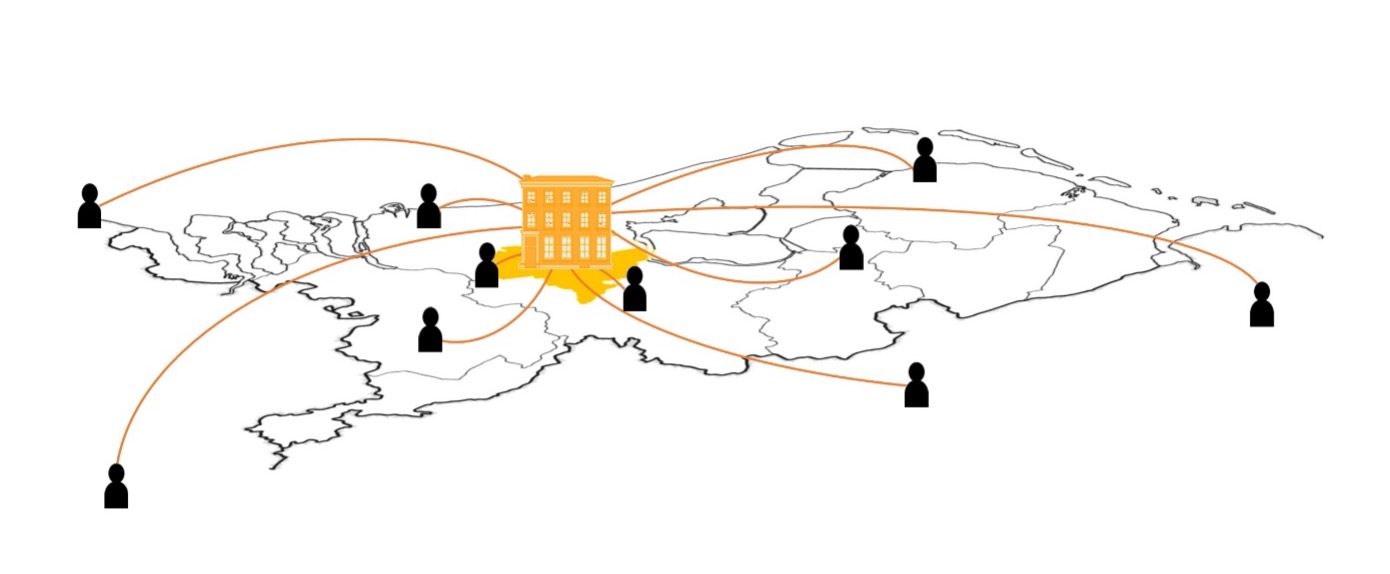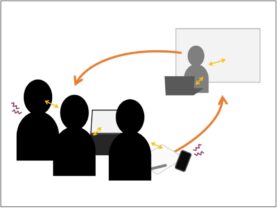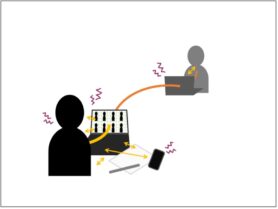Seminar Blogs
“Talk about Serendipity!” – Floor Mijland

In contrast to the previous Transmission in Motion sessions, the format for the seminar of March 31st, entitled ‘Designing for Serendipity’, was different. All participants were invited to visit an online museum curated by a few members from SILT (Subjects of Interdisciplinary Learning and Teaching). The current exhibition centered around the theme of ‘Serendipity’. A serendipitous finding is a fortunate discovery that is unplanned and unexpected. How can one design for serendipity? Creating an environment for serendipitous findings feels like a contradictio in terminis. Luckily, just after the TiM seminar, I had my own serendipitous finding, giving me an idea as to what kind of environment could be stimulating it. Here, I will briefly outline the context of this finding, before drawing a few conclusions about designing for serendipity.
Since the start of the masters’ program of Media, Art and Performance Studies, I have been fascinated by online education. In a time where physical classes are limited, it has been the best available alternative for classes to continue. Though it is an alternative for education, it is a completely new ball game. In principle, online and offline education do not necessarily differ much, at least not in a university context. It might seem they do, but in essence, the same people are present in cyberspace discussing the same topics they would have in an offline setting. Slides are used, discussions are held, lectures are given. In a way, it is business as usual. What makes the two forms of education differ, however, is the ever present intermediating interface: the screen, camera and microphone of your laptop or tablet, all within the same 30 by 30 centimetre square in front of you. Being a teacher myself, this makes me wonder how the online format, and its mediating interface, affects learning processes.

Offline Education

Online Education
Over the past few weeks, I read about MOOC’s, blended-learning, the Communities of Inquiry framework, Johanna Drucker’s Humanities Approach to Interface Theory, etc.: concepts loosely connected to interfaces and online education yet lacking common ground. Frustrated, and in the middle of other deadlines, I focussed my attention on another course, and lo and behold, there it was, my serendipitous finding: multimodal literacy and systemic functional linguistics, the missing piece in my puzzle. Multimodal literacy relates to the ability to make meaning out of several simultaneously present modalities, such as text, image, sound. The systemic functional linguistics approach is a method of analyzing the meaning-making process that occurs when learning from several modalities. Applying this to online education, we can see how, for example, the chat function in the Teams environment is an additional modality, adding extra layers to a discussion happening on screen.
What my serendipitous finding showed me, is the importance of a diverse study program or work environment. Different people and different research backgrounds might lead to unexpected connections aiding your research along. Additionally, assignments that require you to dive a little deeper than the surface level also stimulate connections. Lastly, letting something rest for a while, to ferment in the back of your mind whilst focussing on something else also seems to trigger serendipity. This, however, requires the ability to recognize it, and I guess that is the ability to develop over time.
References
Literature
- Utrecht University. 2021. “Transmission in Motion Seminar (2020-2021): “Designing for Serendipity” – Ilona Domen, Merel van Goch, Anastasia Hacopian, Anne Kustritz, Rianne van Lambalgen, Toine Minnaert, Florentine Sterk, Iris van der Tuin and Roosmarijn van Woerden (Utrecht University).” Transmission in Motion (blog), Utrecht University. March 31st, 2021. https://transmissioninmotion.sites.uu.nl/transmission-in-motion-seminar-2020-2021-designing-for-serendipity-ilona-domen-merel-van-goch-anastasia-hacopian-anne-kustritz-rianne-van-lambalgen-toine-minnaert-florenti/.
Images
- Figure 1. Mijland, Floor W. January 26th, 2021. Utrecht University Centre. Digital image. Private collection.
- Figure 2. Mijland, Floor W. January 26th, 2021. Offline education. Digital image. Private collection.
- Figure 3. Mijland, Floor W. January 26th, 2021. Online education. Digital image. Private collection.

